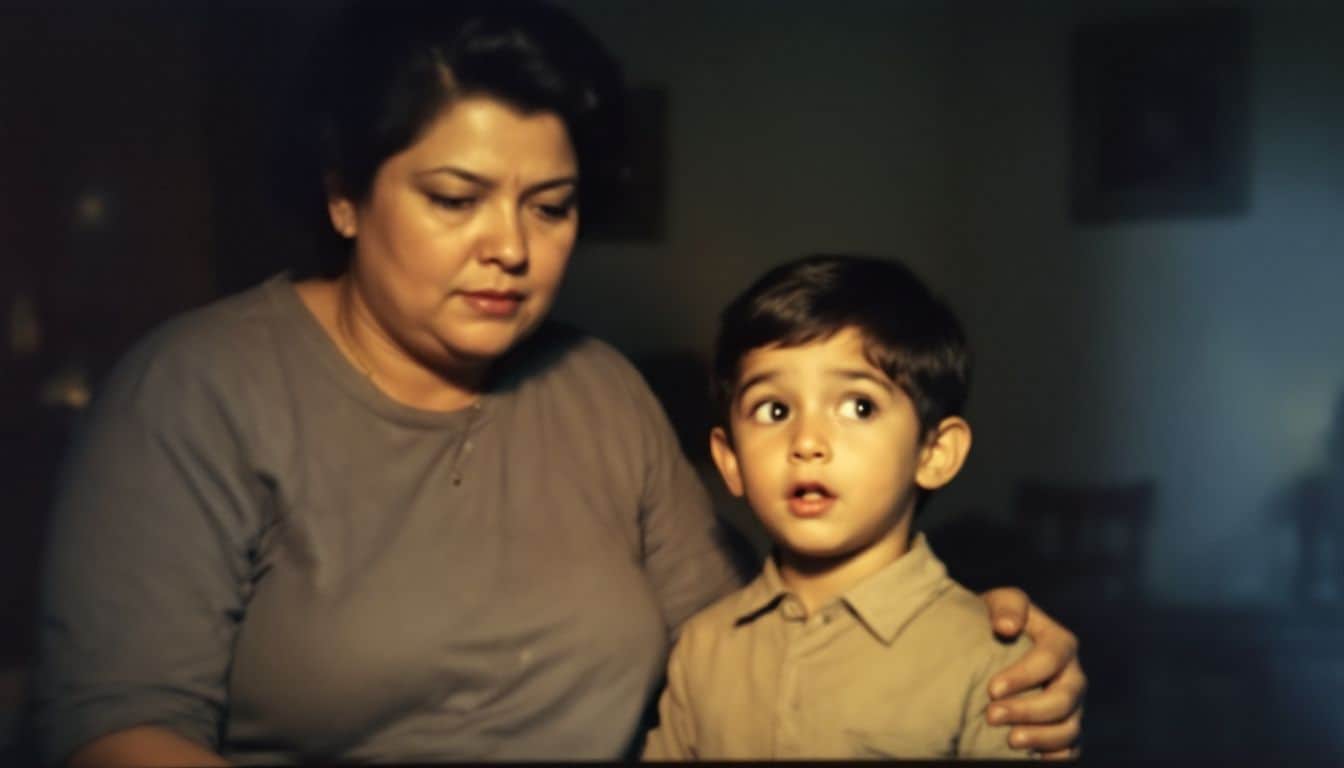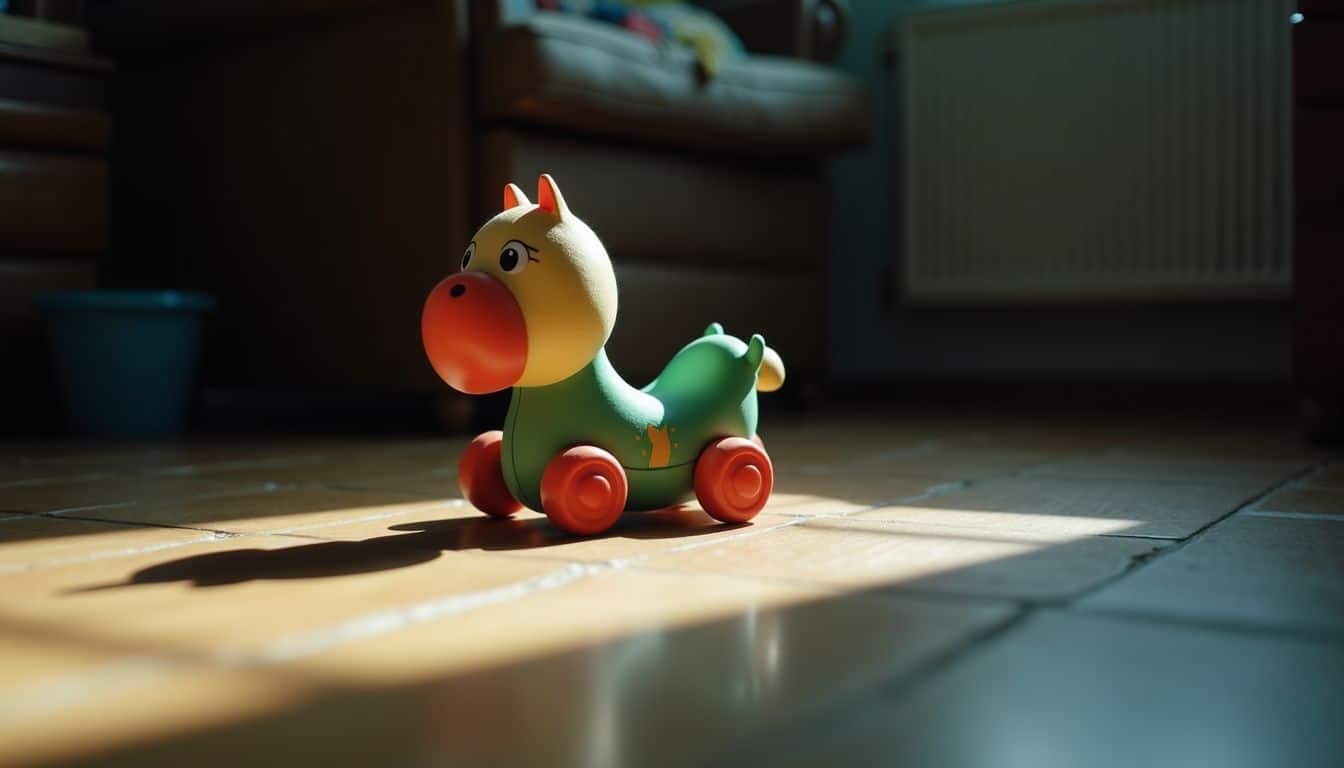Many moms wonder if the “Positive Effects of Being Spanked as a Child” are real, or just outdated myths. 3 While spanking might bring quick behavior change in toddlers, research shows it often leads to aggressive behaviors later in life. 1 This post will help you sort through facts and beliefs about physical punishment—giving you better ways to influence child development without negative emotional effects. Keep reading for safer discipline methods that actually work!
This article explores both immediate changes in behavior and long-term impacts on child development, mental health problems, and psychological health.
Key Takeaways
Studies clearly show that spanking causes children to be more aggressive and act out more often—though parents might initially see temporary improvements.
Globally, around 80% of kids experience physical punishment; in America, about 85% of Black parents and 73% of White parents view spanking as acceptable discipline.
The common argument of “I was spanked and turned out fine” overlooks survivorship bias—the combined evidence from over 160,000 children studied across five decades proves spanking has harmful effects.
Discipline approaches like praising good behaviors, calmly talking through emotions, and setting non-physical consequences offer better benefits for children’s growth and behavior.
The American Academy of Pediatrics clearly advises parents against using any type of physical punishment—but roughly 75% of Americans still think spanking is okay.
Table of Contents
The Historical Context of Spanking

Spanking has deep roots in many cultures dating back thousands of years. Parents once viewed physical discipline as a normal part of raising obedient children in societies where strict family order mattered most.
This brief history shows that corporal punishment of children was once seen as essential to child-rearing in strict family structures.
Traditional Parenting Practices

Across the globe, many families still rely on physical discipline when raising their kids. Around 80% of children worldwide experience spanking—or other physical methods—as punishment. 1 This tradition often has deep cultural roots, where parents view strict discipline as key to building strong character. In homes everywhere, parents might turn to a hand or paddle as tools to teach respect and obedience.
Often, parents choose to spank their child simply because that’s what their own parents did to them.
Discipline methods often reflect what parents learned from their own upbringing rather than what science shows works best for children.
Physical punishment has existed within families for hundreds of years. Moms and dads typically use corporal punishment to quickly correct unwanted behavior. Their aim is to clearly show the difference between right and wrong through direct consequence.
These parenting methods span families across all income levels, though rates can vary depending on poverty and education. Yet science consistently connects spanking to greater aggression, antisocial actions, and emotional struggles as children grow older.
This section reflects how traditional views on discipline continue to influence parental discipline despite evidence linking physical punishment with adverse childhood experiences and behavior problems.
Cultural Beliefs About Discipline

Cultural attitudes toward spanking differ widely. Lots of societies consider physical punishment normal, even beneficial. In fact, research indicates around 85% of Black parents and 73% of White parents support spanking as discipline. 2 Growing up, spanking was routine in my home—many of my friends experienced the same. Such cultural values often pass through families, generation after generation. Parents who spank usually learned it from their own upbringing, creating a cycle that feels familiar, even natural.
But just because it’s culturally accepted doesn’t mean spanking actually works. Recent studies question the idea that spanking is more effective in communities where it’s common. Long-term research links physical punishment to increased behavior issues, no matter the family’s culture or traditions.
This remains true even if parents feel spanking improves behavior. Moms facing the challenges of solo parenting often feel extra stress around choosing discipline methods.
Scientific evidence clearly reveals one thing: spanking leads to negative effects on kids, regardless of cultural practices or personal beliefs.
This section underscores cultural differences in parental discipline and the persistent misconceptions around immediate versus long-term benefits.
Claimed Positive Effects of Spanking

Some parents claim spanking teaches kids to obey rules faster than talking. They point to quick changes in behavior after physical discipline as proof it works.
Immediate Behavioral Compliance

Many parents choose spanking because it delivers fast results. A child touches a hot stove, receives a firm tap, and instantly stops that risky behavior. Growing up, I saw this firsthand in my own family—my nephew would quit throwing tantrums right after a gentle swat.
In sudden, risky situations like running into traffic or reaching for electrical outlets, spanking seems like a simple solution. Other methods take longer, while spanking brings immediate change. 4
Yet, this quick solution carries hidden costs. Kids stop acting out due to fear—not because they understand their mistake. Research confirms spanking gets instant obedience but fails to teach children how to choose wisely later.
Instead of real respect for important rules, spanking creates anxiety around consequences. A fear-driven method may halt bad actions now yet often fosters aggression and behavior troubles in the long run.
Children truly need clear guidance, helping them become adults who choose wisely—even if no one’s around to notice. 3
This section highlights that while spanking may cause immediate compliance, it lacks the ability to foster genuine understanding of behavior or long-term respect for authority.
Development of Respect for Authority

Real respect for authority doesn’t come from spanking or harsh punishments. Studies strongly suggest that spanking teaches kids the wrong lessons about respect. 3 Kids who experience physical punishment usually behave from fear—not genuine understanding.
Instead of learning the value behind rules, they just become better at not getting caught. Over time, this behavior can cause low self-esteem, anxiety, and emotional struggles.
Some parents rely on methods like diaper punishment or spanking, believing it will teach respect—but really, they’re only teaching avoidance.
The American Academy of Pediatrics stresses the importance of positive discipline for kids. Healthy discipline helps children build respectful relationships with adults, instead of fearing consequences.
Kids naturally learn by watching adults handle conflicts without violence or threats. Clearly defined rules, gentle guidance, and open communication about emotions help children grow emotionally stronger—without pain or anxiety as motivators.
This area discusses that true respect and understanding develop through positive discipline and clear communication, not fear-based methods.
Reinforcement of Boundaries and Rules

Lots of parents see spanking as a helpful way to teach kids about limits. Especially with preschool-age kids—it can make the boundary between right and wrong behavior very clear.
Many parents who favor spanking choose only to use it for intentional disobedience, never for accidents or minor slip-ups. Even the American Academy of Pediatrics points out that some families feel spanking helps children grasp household rules quicker than using words alone.
Giving kids clear warnings before spanking may also help them link their own actions to the consequences. 5 Some families argue this method teaches respect for rules in ways that simple verbal reminders might miss.
Setting firm limits with spanking tends to work best if applied consistently. Before correcting with discipline, parents usually explain rules thoroughly. Experts supportive of spanking suggest correcting behavior privately, in a calm and caring way, so children understand their actions bring clear consequences.
The main goal is helping kids build self-control, not fear. Kids, in turn, might pause and reconsider before breaking important safety rules. Another essential factor involves considering how adults in authority influence a child’s understanding of rules.
This section notes that reinforcement of boundaries requires clarity and consistency, with natural consequences teaching effective conflict resolution skills.
Perspectives Supporting Spanking

Some parents stand by spanking as a fast way to stop bad behavior in its tracks. They point to quick results and claim kids learn respect through mild physical correction.
Arguments for Quick Behavioral Correction
Parents who support spanking often highlight how quickly it corrects bad behavior. Many mothers say a swift swat ends tantrums faster than explaining or giving a time-out. Its appeal comes from immediate results—like a child quickly pulling away after a firm slap on the hand for touching a hot stove. 3 This instant compliance gives parents a feeling of relief and control in stressful situations.
Quick correction teaches clear boundaries in a world full of dangers.
Cultural background also strongly shapes how families see physical discipline. In many households, spanking gets passed along through generations as a normal way of teaching respect.
Advocates point out that physical consequences teach kids to obey rules quicker than drawn-out explanations. 6 Supporters also state mild physical punishment helps children understand how serious safety rules or harmful actions can be.
This section reflects that some support a rapid behavioral response as a benefit of spanking despite potential risks to emotional development and mental health problems.
Perceived Harmless Nature of Occasional Spanking
Many moms think light spanking is just a harmless part of raising kids. Growing up, my family considered an occasional swat normal discipline—not abuse. Even today, around one-third of parents still practice spanking, convinced a quick smack corrects misbehavior without lasting effects. 3 Often, this belief comes directly from how adults themselves were raised. Advice passes down through families, even grandparents assuring new parents, “A little discipline never hurt anyone.”.
The “no harm done” mindset only looks at short-term results. Moms and dads see a child immediately stopping unwanted actions, confirming their idea that spanking is effective. But the American Academy of Pediatrics says this quick fix creates an illusion of success.
Most adults who experienced spanking as kids don’t link later difficulties to those childhood corrections. Instead, they remember only the immediate impact—without realizing how it might affect emotional health or conflict resolution later in life.
This missing connection makes it difficult for people to move beyond the common “I turned out fine” attitude.
This portion contests the idea that light spanking is harmless by highlighting the hidden long-term emotional development issues and potential for antisocial behaviour.
Examining the Perceived Benefits

Parents often see quick results from spanking but miss the long-term costs to a child’s mental health. Research shows that short-term compliance can mask deeper issues like fear, anger, and damage to the parent-child bond.
Distinguishing Between Short-Term and Long-Term Effects
Spanking might seem effective in the moment, bringing an immediate stop to misbehavior—but it comes with long-term costs. Sure, a quick swat might make a child pause their actions right away, giving moms the impression it’s solving the issue.
Yet, studies consistently link physical discipline with more aggression as kids grow—not less. 7 I’ve seen this play out with my own family: my oldest was occasionally spanked and over time grew more defiant.
My younger child, though, raised on calm discussions and time-outs, showed noticeably better self-control.
The initial quick fix hides a deeper, lasting issue that becomes clear as kids get older. Long-term studies clearly show spanking increases problematic behaviors—even across different ages and backgrounds. 7 Many parents share stories of feeling stuck—they must continually use harsher punishments just to gain obedience. This creates a troubling gap between the lessons parents intend and what kids actually internalize.
Kids also respond differently to physical punishment, which makes trying gentler, alternative methods even more important.
This analysis distinguishes between fleeting behavioral corrections and lasting impact on psychological health and externalizing behaviour.
Variability in Parenting Outcomes
Although research clearly links physical discipline to long-term effects, each family’s experience stays unique. An analysis of studies involving 160,927 children shows parenting outcomes differ greatly across cultures, communities, and homes. 1 Around the world, nearly 80% of children experience physical discipline—but not every child reacts the same way or develops similar problems.
The differences we see in child outcomes aren’t random – they reflect complex interactions between family dynamics, cultural context, and individual resilience.
Family environment strongly influences how a child processes discipline. Data indicates a clear link (d = .33) between spanking and harmful outcomes. 1 Yet, the strength of this connection depends greatly on emotional support, parent-child attachment quality, and whether parents teach effective problem-solving at home.
Cultural attitudes about discipline also shape how children understand physical punishment, affecting behavior and mental health differently from one community to another.
This section highlights the variability in parental discipline outcomes and underscores the importance of emotional development and conflict resolution skills.
Critiques of the Positive Effects Narrative

Many adults claim “I turned out fine” after being spanked, but this view often ignores those who didn’t cope well with physical punishment. Research fails to show any lasting benefits from spanking, while studies link it to increased aggression, mental health issues, and damaged parent-child bonds.
Survivorship Bias: “I Turned Out Fine”
People sometimes defend spanking by saying, “I was spanked, and I turned out fine”. But that statement misses a key point—it’s an example of survivorship bias. Survivorship bias means noticing only the ones who seem okay, while ignoring everyone who was harmed.
Parenting expert Justin Coulson explains that this flawed logic ignores decades of careful research about physical discipline. Data gathered from more than 160,000 children, studied over 50 years, clearly shows spanking causes negative outcomes for kids. 8 So, the simple “I’m fine” argument overlooks how much healthier and happier those individuals might be if they’d never been spanked.
The issue, though, goes far beyond personal anecdotes. This type of thinking leads moms and dads to repeat harmful habits, even with strong evidence proving the damage. Some grown-ups wrongly assume their own childhood experiences weren’t really traumatic.
Others fail to connect their current difficulties to past punishments. The public often clings stubbornly to spanking, despite studies linking it to mental health issues, antisocial behavior, and struggles managing emotions.
Parents who manage to break that cycle usually find easier and kinder methods—positive discipline—to set clear limits for their kids without physical punishment.
This critique challenges the narrative of harmless spanking by exposing survivorship bias and emphasizing the overlooked risks of child maltreatment.
Lack of Scientific Consensus on Benefits
Experts still debate if spanking really helps kids behave. Some studies suggest that, in certain situations, spanking might do the trick—but others warn it could cause damage instead. 1 As a mom raising three kids, I understand how puzzling these conflicting views can seem. Even big reviews of research—the kind known as meta-analyses—come to different conclusions on physical punishment.
That’s partly because studies often differ in their methods, like how they collect data, or what exact results they measure.
Some specialists point to improved obedience right after a spanking—the immediate “fix” for behavior—but others emphasize potential mental health concerns down the road. With no clear agreement from scientists, it becomes tough for parents to judge if spanking actually helps kids in the long run. 1 Experts still need stronger, clearer research to finally settle this debate about physical discipline.
Let’s now consider some other discipline methods—ones that sidestep the spanking issue completely and still keep your sanity intact.
This section points out that a lack of scientific consensus leaves parents uncertain about the benefits and risks associated with corporal punishment of children.
Alternative Discipline Approaches

Parents can teach kids through methods that build trust instead of fear. These options help children learn right from wrong while keeping their sense of worth intact.
Positive Reinforcement Strategies
Praise usually works far better than punishment with kids. Instead of spanking, try noticing your child being good—and reward that positive behavior right away. For example, you might say, “I really liked seeing you share toys with your brother!” Or, maybe give a high-five if they clean up their toys without reminders.
A few deep breaths can help preserve your sanity during tricky parenting moments. Before reacting to frustrating behavior, pause and slowly breathe in and out five times. That quick pause can help you stay calm and sets a good example for managing emotions.
Another useful strategy: making a simple sticker chart your child fills whenever they behave well. Seeing those stickers pile up can motivate kids greatly. Small rewards—maybe an extra bedtime story or a fun activity together—show your kids their efforts are noticed.
These positive reinforcement methods align with strategies for positive discipline and promote long-term emotional development.
Communication and Emotional Understanding
Talking openly with your child does more than reward good behavior—it deepens your bond. In tougher moments, clear talks become bridges connecting parent and kid. Many mothers discover that discussing the reasons behind rules helps children grasp boundaries better than physical punishment.
I noticed this myself; spending extra time talking through issues fixed far more problems than quick discipline ever could. 10
Kids also need help identifying their emotions before they can manage them. Simple conversations about feelings provide children with tools to face strong emotions calmly, without acting out.
This approach greatly reduces the need for harsher methods, like spanking. Parents who openly discuss emotions help their children solve conflicts with words instead of anger and aggression.
Laws about spanking your child vary state by state, but teaching emotional skills through talks is effective everywhere.
This section emphasizes that clear communication and emotional understanding foster sound emotional development and guide conflict resolution without physical punishment.
Setting Clear Boundaries Without Physical Punishment
Parents can set clear boundaries without spanking or hitting their children. Firm rules tend to be more helpful than physical punishment. Give your child choices—like picking between two acceptable outfits—to help build decision-making skills.
Timeouts offer kids space to calm down and think things over. This method promotes self-control, not fear. 9
Praise works wonders to encourage good behavior. Notice your child doing something right, and tell them clearly that you appreciate it. Make simple, direct requests about the behavior you want, rather than constantly saying “don’t”.
For instance, instead of saying “Don’t run”, say “Please walk”. Positive instructions make your expectations obvious. Logical consequences—like losing playtime after ignoring rules—teach cause and effect better than physical discipline. 11
This approach highlights natural consequences and clear boundaries as key factors in effective child-rearing and positive discipline.
Breaking the Cycle of Physical Discipline

Breaking the cycle of physical discipline starts with parents who choose new paths for raising their kids – paths that don’t include spanking. Read more to learn how modern families are finding better ways to teach children right from wrong without using their hands.
Shifting Parenting Norms in Modern Society
Today’s parents have different discipline options compared to earlier generations. Many families now prefer gentle approaches, moving away from spanking. This shift comes from better understanding of child rights and development.
The American Academy of Pediatrics strongly recommends against corporal punishment of any kind. And this stance matters, since around 80% of American children still experience spanking before finishing fifth grade. 12
I’ve noticed this change at my own family events. My sister avoids spanking entirely, even though our parents used it on us growing up. Instead, she uses techniques like brief time-outs or taking away privileges.
Her kids handle their emotions much better compared to us at their age. Public health experts highlight this change as a step in the right direction. With about 75% of Americans still approving spanking, though, there’s clearly room for more education.
Promoting gentle discipline methods can greatly benefit children’s emotional health. 7
This section reviews the shift in parenting styles and reinforces the benefits of non-violent discipline for improved child development and conflict resolution.
Educating Parents on Nonviolent Methods
Parents can discover better ways to guide kids without using physical punishment. Many mothers find parenting courses helpful; these classes teach useful skills for handling difficult moments.
The programs show effective ways to set clear boundaries and speak calmly instead of spanking children. My sister took a six-week parenting class, and it changed how she handled discipline.
After completing the course, she replaced spanking with reward charts and short time-outs. Her children started to listen and behave much better.
Public health campaigns now highlight calm and gentle methods of discipline that really work. 13 Studies confirm that peaceful discipline improves children’s behavior and builds stronger family connections.
Simple strategies—such as praising good choices, allowing natural consequences, and using brief “cooling off” breaks—help kids understand right and wrong clearly. These gentle methods encourage emotional growth and protect children’s basic rights.
The American Academy of Pediatrics fully supports peaceful discipline practices, noting they effectively teach good values without the harm caused by physical punishment.
This final section details that educating parents on nonviolent discipline helps break the cycle of physical punishment and improves child-rearing outcomes.
People Also Ask
Are there any positive effects of spanking children?
Studies clearly show no benefit from spanking kids. Research highlights that physical punishment can harm children’s mental health, causing issues with growth and emotional well-being. The American Academy of Pediatrics strongly advises parents to avoid physical punishment altogether.
Does spanking help with child behavior?
No—spanking usually makes things worse. Kids disciplined with spanking tend to have more antisocial and aggressive behaviors later on. Positive discipline—like setting clear limits, having calm conversations, and using natural consequences—works far better over time.
What do experts say about spanking?
Experts in child psychology—and leading groups like the American Academy of Pediatrics—strongly oppose spanking as discipline. Scientific research regularly links physical punishment to emotional problems and delayed psychological growth among children. Child specialists recommend respectful discipline methods that teach without violence.
How does spanking affect a child’s future?
Spanking children can lead to problems lasting into adulthood. Kids who experience physical punishment typically face greater challenges at school and poorer overall health as adults. They may also struggle to manage conflicts in healthy ways.
Is there a safe way to spank a child?
Experts agree there’s no safe or harmless way to spank a child. Even actions considered mild spanking are labeled abusive by child development specialists. Physical punishments, no matter how gentle they seem, risk both mental and physical harm.
What should parents use instead of spanking?
Positive discipline works far better than spanking for guiding children’s behavior. Calm talks, fair rules, and keeping consequences clear help shape good behavior gently but effectively. This approach strengthens trust, supports children’s brain growth, and fosters happier relationships.
Disclaimer: This content is informational and is not a substitute for professional advice. The information provided does not replace guidance from qualified professionals on child development, mental health problems, and non-violent discipline.
Methodology and Disclosures: The material is based on peer-reviewed studies and expert recommendations, including those from the American Academy of Pediatrics. No sponsorship or commercial influence affected this article.
References
^ https://pmc.ncbi.nlm.nih.gov/articles/PMC7992110/
^ https://pmc.ncbi.nlm.nih.gov/articles/PMC8323829/
^ https://parents.app/parenting/child-behavior/positive-effects-of-being-spanked-as-a-child/a/ (2024-09-18)
^ https://pmc.ncbi.nlm.nih.gov/articles/PMC8386132/
^ https://time.com/3387226/spanking-can-be-an-appropriate-form-of-child-discipline/
^ https://ecep.uark.edu/_resources/pdf_other/pre-k_sel/wes-spanking.pdf
^ https://pmc.ncbi.nlm.nih.gov/articles/PMC3768154/
^ https://www.nytimes.com/2018/11/27/well/family/the-fallacy-of-the-i-turned-out-fine-argument.html (2018-11-27)
^ https://www.chhs.niu.edu/child-center/resources/articles/alternatives-to-spanking.shtml
^ https://www.gse.harvard.edu/ideas/usable-knowledge/21/04/effect-spanking-brain (2021-04-13)
^ https://med.emory.edu/departments/pediatrics/divisions/neonatology/dpc/alternatives-physical-punishment.html
^ https://medium.com/@parentsdoingbetter/breaking-the-cycle-of-spanking-understanding-the-impact-on-children-68b3241403eb
